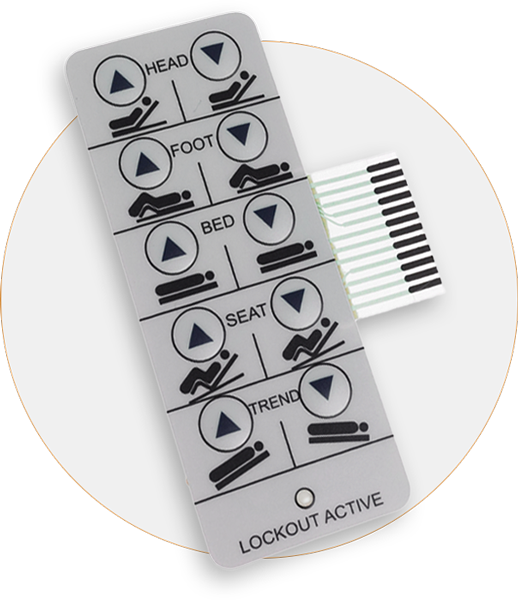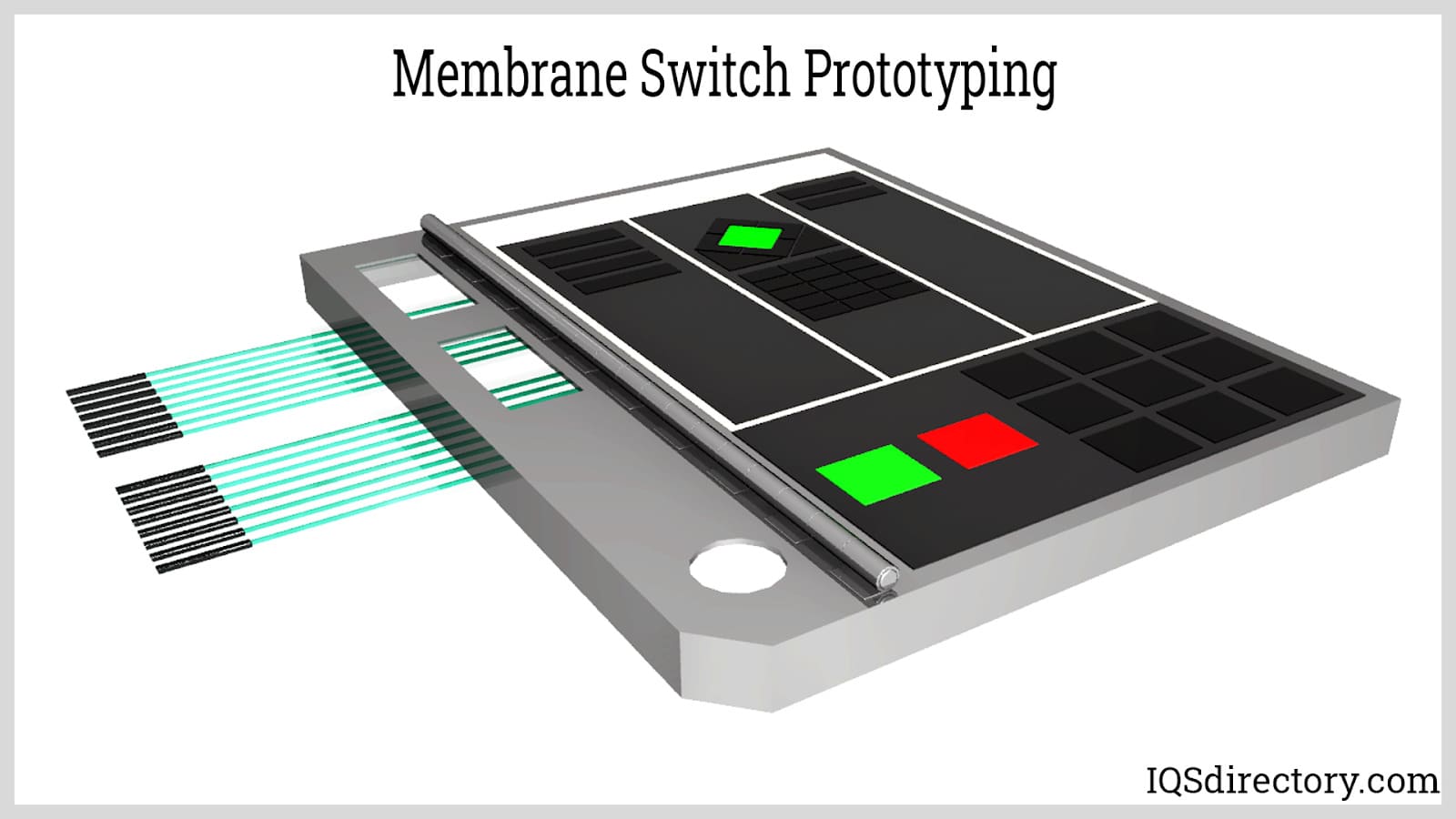Find High-Quality and Cost-Effective Solutions with Membrane Switches Modern Technology
Find High-Quality and Cost-Effective Solutions with Membrane Switches Modern Technology
Blog Article
Membrane Changes Explained: A Comprehensive Guide to Their Benefits
Membrane switches over represent a advanced and functional solution for producing individual interfaces throughout a range of sectors. As sectors increasingly look for effective and trustworthy control user interfaces, comprehending the specific benefits and applications of membrane layer changes comes to be crucial.
What Are Membrane Switches?

When pressure is put on the membrane switch, the layers make contact, completing an electric circuit. This basic system enables a vast array of applications, from consumer electronic devices to commercial equipment. Membrane switches are often made to be immune and water resistant to dust and contaminants, making them suitable for settings where toughness is vital.
Additionally, the flexibility of the products utilized in membrane switches promotes ingenious designs that can adjust to different forms and dimensions. This adaptability adds to their appeal in diverse areas, including clinical devices, vehicle controls, and home devices. Generally, membrane layer switches represent an important aspect in modern-day individual interface innovation, bridging the gap in between users and electronic systems.
Key Benefits of Membrane Layer Switches
Amongst the myriad of interface options offered, membrane layer switches attract attention for their unique mix of advantages. Among the key advantages is their compact and light-weight style, which enables combination right into a large range of gadgets without adding considerable mass. This is specifically useful in applications where area is limited.
Furthermore, membrane layer changes deal sturdiness and resistance to ecological variables. They are generally created with materials that can endure wetness, dust, and various chemicals, making them ideal for harsh conditions. This toughness adds to a longer lifespan compared to traditional mechanical switches.
Another considerable benefit is the convenience in modification. Membrane layer buttons can be published with numerous graphics, shades, and structures, enabling tailored styles that satisfy particular branding or functional requirements. This adaptability encompasses the number of layers and circuit options, giving designers with numerous arrangements.
In addition, the responsive feedback provided by some membrane switches boosts individual experience, making them more instinctive to run. Lastly, the convenience of cleaning and upkeep additionally strengthens membrane buttons as a sensible choice in both customer and industrial applications. Membrane Switches. On the whole, these crucial benefits make them a favored solution for numerous developers and producers
Applications in Numerous Industries
Just how do membrane buttons locate their location across diverse industries? Their versatility and functionality make them integral elements in fields ranging from health care to customer electronics. In medical tools, membrane buttons are used for their convenience of cleaning and resistance to contamination, making sure health in settings where sterility is important.
In the consumer electronics industry, these switches Source supply smooth, straightforward interfaces that improve item appearances while maintaining longevity versus deterioration. Automotive applications take advantage of membrane switches over as well, where they are used in dashboards and control board, supplying reliable performance in challenging conditions.
Furthermore, industrial machinery uses membrane switches for control panels due to their robustness, capacity to hold up against rough environments, and customizable designs that satisfy particular operational needs. The food sector leverages membrane switches for their ease of use and resistance to spills, guaranteeing operational effectiveness in hectic settings.
Ultimately, the flexibility of membrane layer switches throughout these diverse applications underscores their crucial role in modern innovation, improving user communication while meeting industry-specific requirements. Their proceeded advancement guarantees further combination into arising areas and innovative items.
Design and Customization Alternatives
The style and customization choices readily available for membrane layer switches are critical for tailoring user interfaces to meet details individual needs and visual preferences. These switches can be created in various shapes, dimensions, and formats, enabling for smooth combination right into varied applications. The versatility in design indicates that producers can develop special interfaces that improve use and maintain brand name identity.
Custom appearances, colors, and graphics can be put on the surface area of the click here for more info membrane layer switch, providing a chance for branding and customer involvement. Additionally, backlighting alternatives, such as LED illumination, can be integrated to enhance presence in low-light problems, thus boosting capability.
Functional elements can also be tailored, including tactile feedback and actuation force, which can be adapted to suit different user interactions. The option of materials, such as polyester or polycarbonate, permits variations in resilience and environmental resistance, dealing with the particular needs of various sectors.
Inevitably, the extensive design and modification capabilities of membrane layer buttons make it possible for firms to create visually enticing and user-friendly interfaces, ensuring that their items fulfill both practical and company website visual demands efficiently. Membrane Switches.
Factors To Consider for Implementation
Applying membrane layer changes requires mindful consideration of different aspects to guarantee ideal capability and user experience. Factors such as direct exposure to moisture, severe temperature levels, and chemical substances can dramatically impact the switch's performance and durability.

Another vital facet is the button's style and design. Making sure that the tactile feedback and actuation pressure straighten with individual expectations improves functionality. Conducting user screening can supply beneficial understandings right into the ideal design.
Additionally, compatibility with digital components have to be evaluated. The switch's circuitry should align with the total system style, making certain dependable signal transmission and minimizing disturbance.
In addition, production approaches and expenses ought to be reviewed. The option between customized designs and common designs can influence both spending plan and lead time.
Finally, consider upkeep and fixing. Membrane buttons may need certain cleaning and treatment procedures to preserve their look and functionality in time. By dealing with these factors to consider, organizations can carry out membrane layer buttons that meet their operational demands while offering a favorable individual experience.

Conclusion
In final thought, membrane changes represent a functional and sturdy control user interface appropriate for a wide array of applications across numerous markets. Membrane Switches. As technology proceeds to develop, the relevance of membrane buttons in contemporary tools stays substantial, using both performance and aesthetic charm.
Membrane changes stand for a advanced and versatile remedy for creating individual interfaces across a variety of markets.Understanding the essential parts of modern digital interfaces, membrane switches are a kind of user interface gadget that consist of versatile, slim layers of material. Generally, membrane layer switches over represent an essential aspect in modern-day user interface innovation, bridging the space in between customers and digital systems.
Among the myriad of user interface alternatives offered, membrane layer switches over stand out for their unique combination of benefits.The design and personalization alternatives readily available for membrane switches are critical for tailoring interfaces to meet particular individual requirements and visual preferences.
Report this page